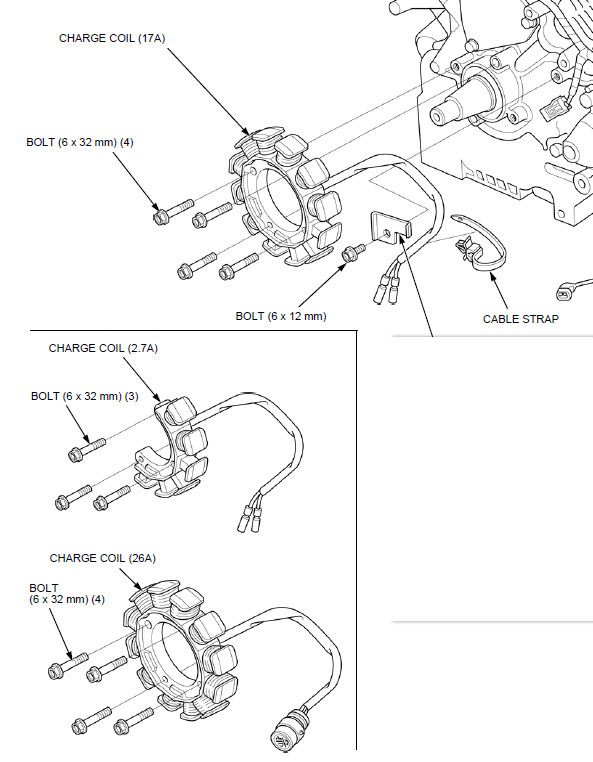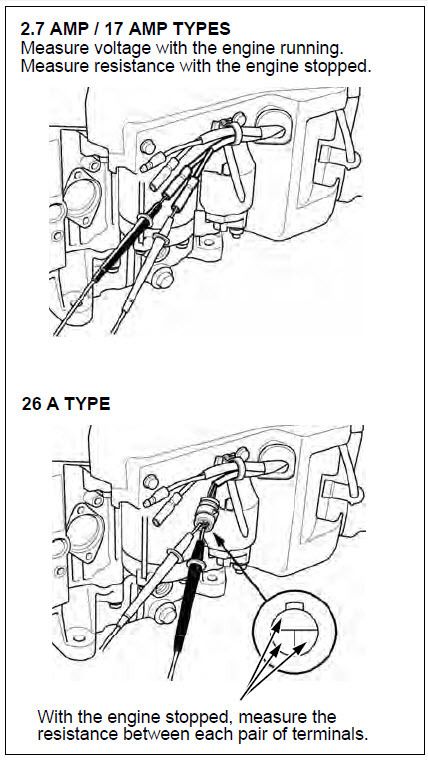Hello,
New to the Forum and thanks for sharing your knowledge.
I installed the Honda GX630 engine in my neighbors John Deere 318 2 years ago. Its been trouble free until a few weeks ago. He first had a dead battery and replaced it, mowed his yard but the battery warning light remained on. He brought it over and we found the diode burned open. We replaced diode and checked voltage at battery while operating. Voltage while at idle with lights and PTO off steady 14.5VDC. As you turn on lights voltage would jump up to 16VDC, Next turn on PTO and the voltage would jump to 17.5VDC. The diode would get pretty hot to the touch. He went ahead and mowed his yard and by the time he was done it had split the shrink tube open that enclosed the diode. Checked the diode at that point and it had failed by showing continuity in both directions with meter. Ordered and replaced diode and voltage regulator. Installed new diode and regulator. Conditions are still the same. At idle the voltage remains at 14.5 and never drops. If you apply any load the voltage will remain high.
Stator info No resistance to ground
.2 ohms between conductors.
AC voltage from stator while operating at idle no load (lights off PTO off) 34VAC
AC voltage from stator while operating at full speed no load. 68VAC
AC voltage from stator while operating at idle with light on. 22VAC
AC voltage from stator while operating at full speed. 45VAC
Again thanks for your input. Any advise is appreciated.
Regards,
Jim :thumbsup:
New to the Forum and thanks for sharing your knowledge.
I installed the Honda GX630 engine in my neighbors John Deere 318 2 years ago. Its been trouble free until a few weeks ago. He first had a dead battery and replaced it, mowed his yard but the battery warning light remained on. He brought it over and we found the diode burned open. We replaced diode and checked voltage at battery while operating. Voltage while at idle with lights and PTO off steady 14.5VDC. As you turn on lights voltage would jump up to 16VDC, Next turn on PTO and the voltage would jump to 17.5VDC. The diode would get pretty hot to the touch. He went ahead and mowed his yard and by the time he was done it had split the shrink tube open that enclosed the diode. Checked the diode at that point and it had failed by showing continuity in both directions with meter. Ordered and replaced diode and voltage regulator. Installed new diode and regulator. Conditions are still the same. At idle the voltage remains at 14.5 and never drops. If you apply any load the voltage will remain high.
Stator info No resistance to ground
.2 ohms between conductors.
AC voltage from stator while operating at idle no load (lights off PTO off) 34VAC
AC voltage from stator while operating at full speed no load. 68VAC
AC voltage from stator while operating at idle with light on. 22VAC
AC voltage from stator while operating at full speed. 45VAC
Again thanks for your input. Any advise is appreciated.
Regards,
Jim :thumbsup:


